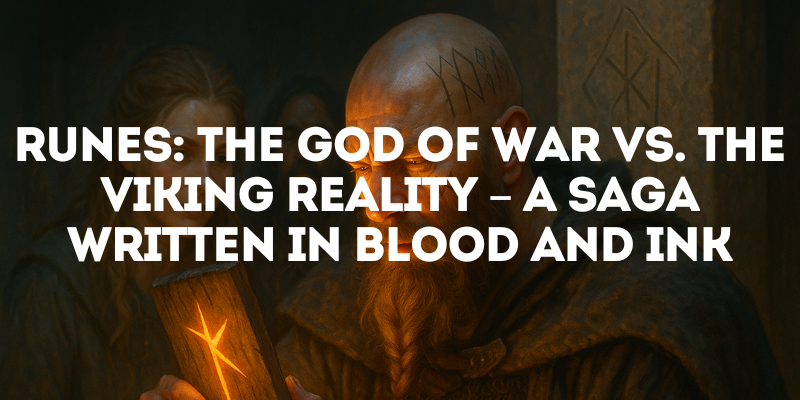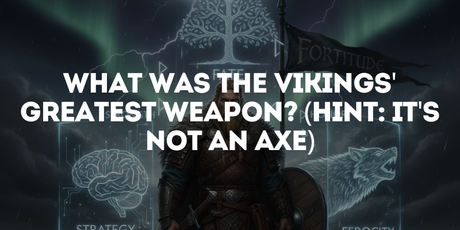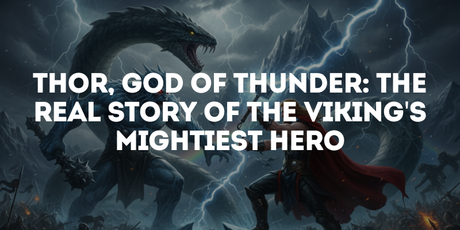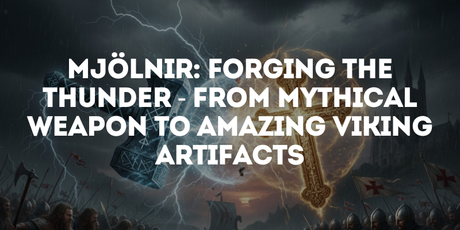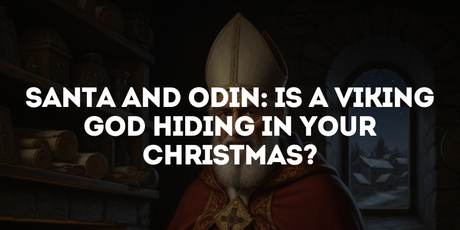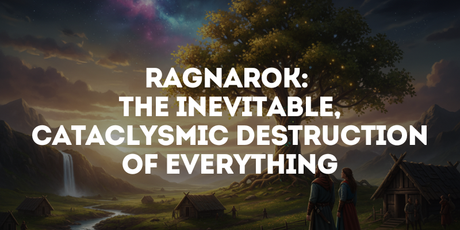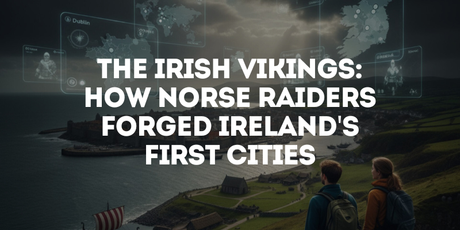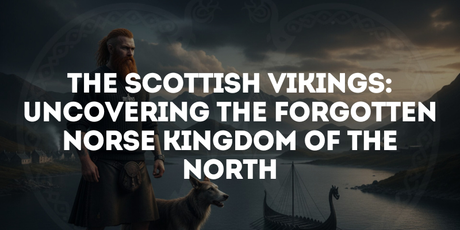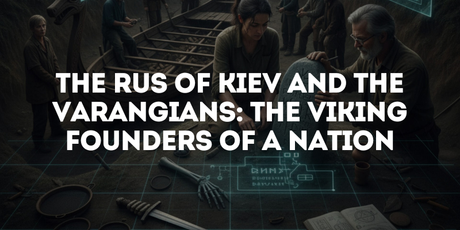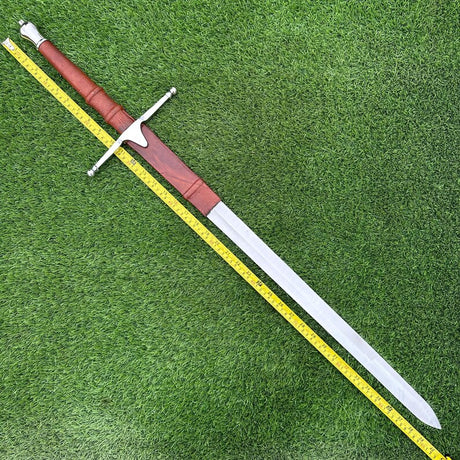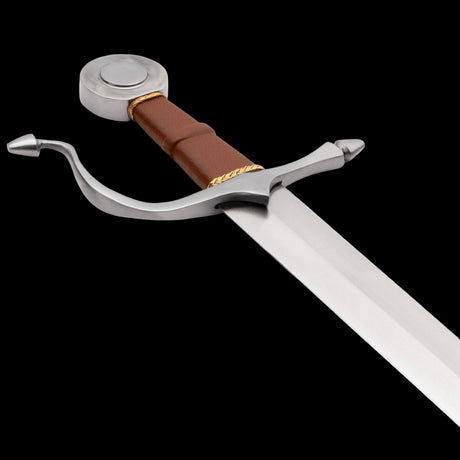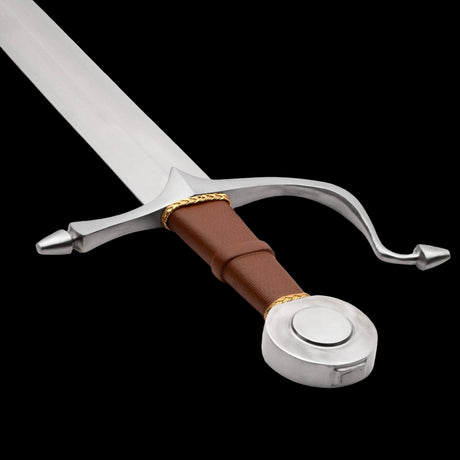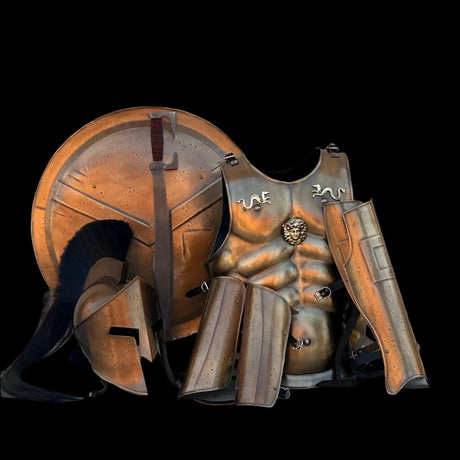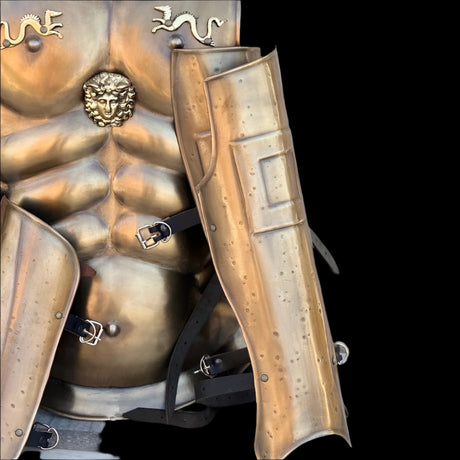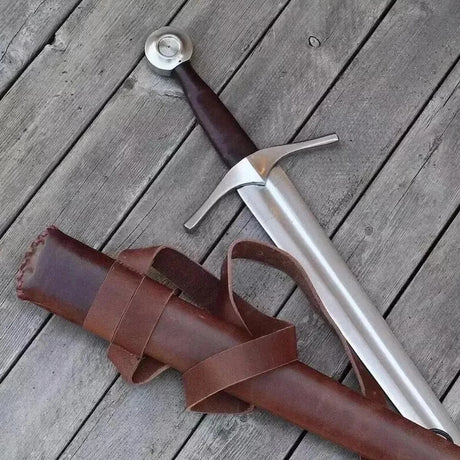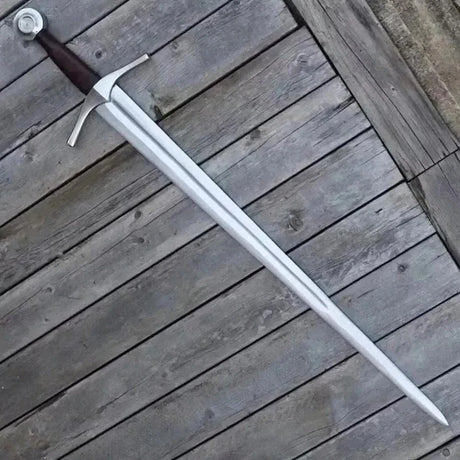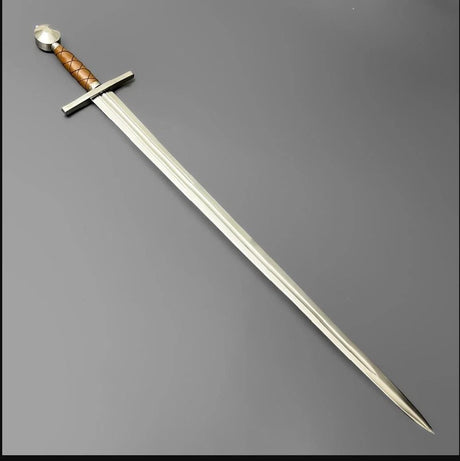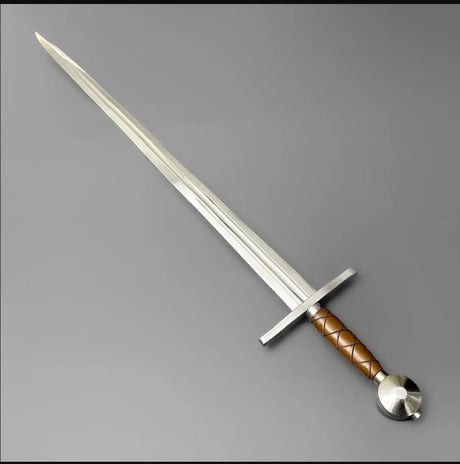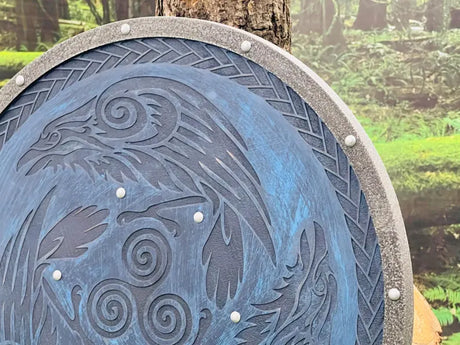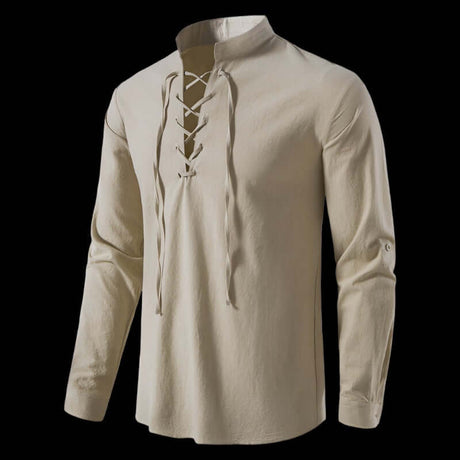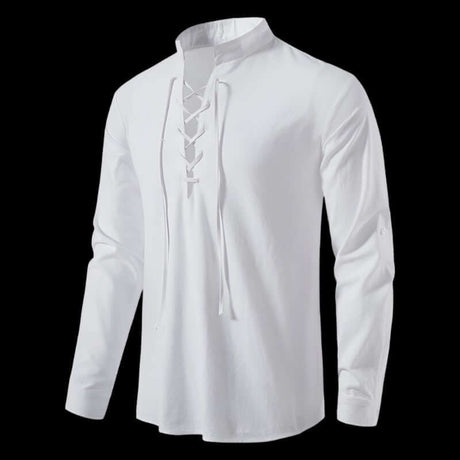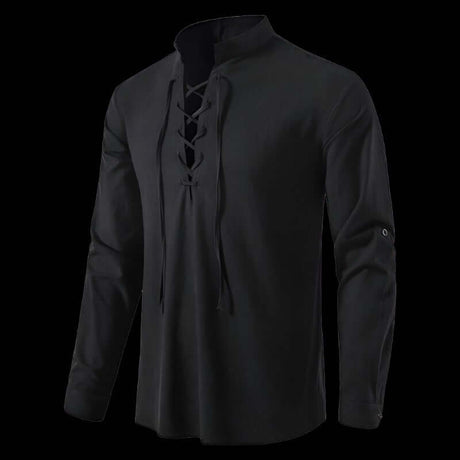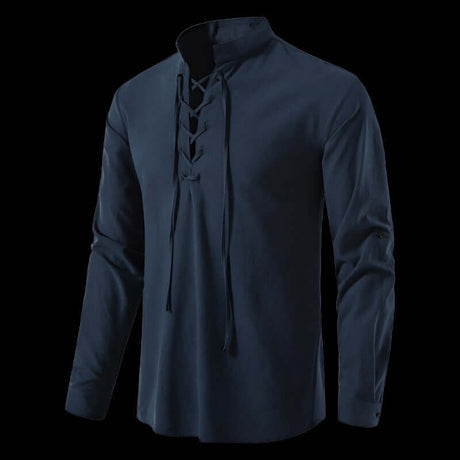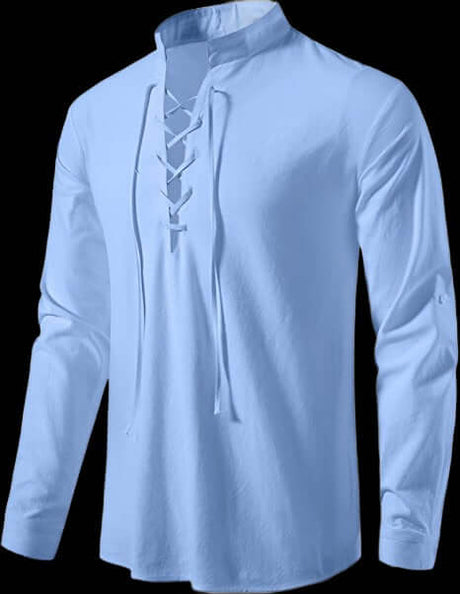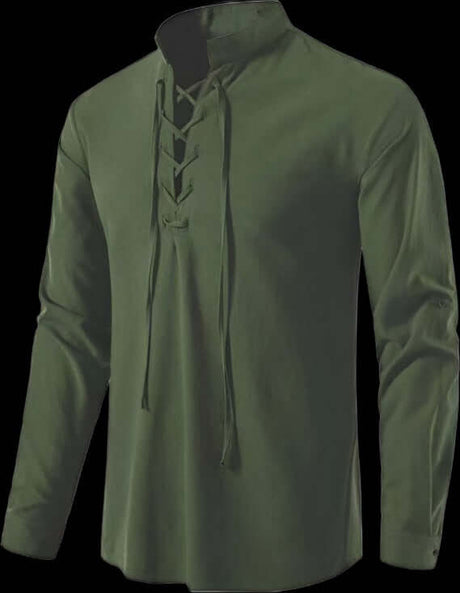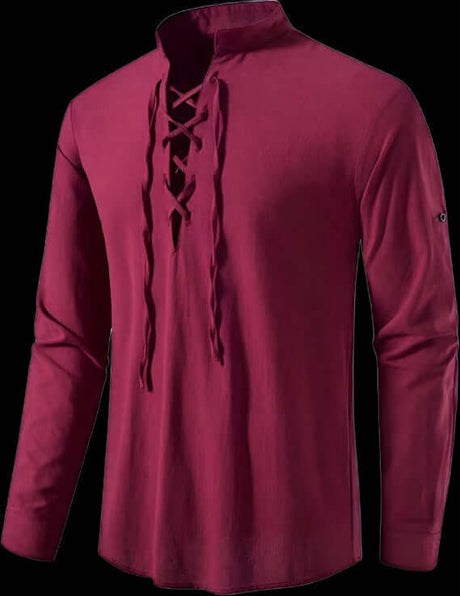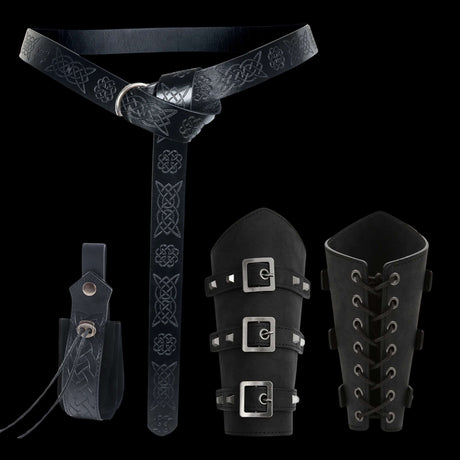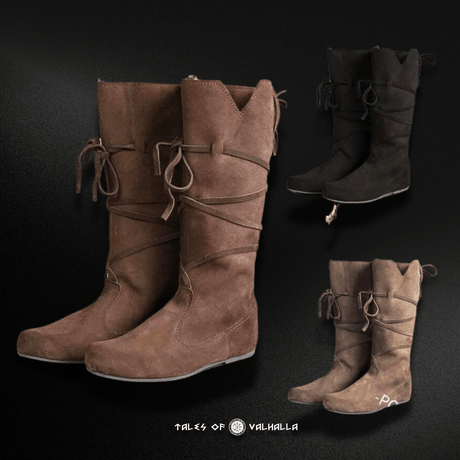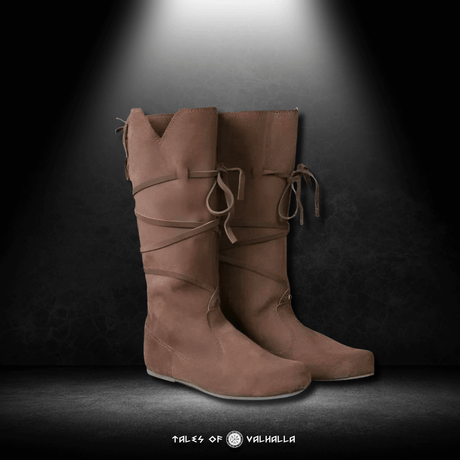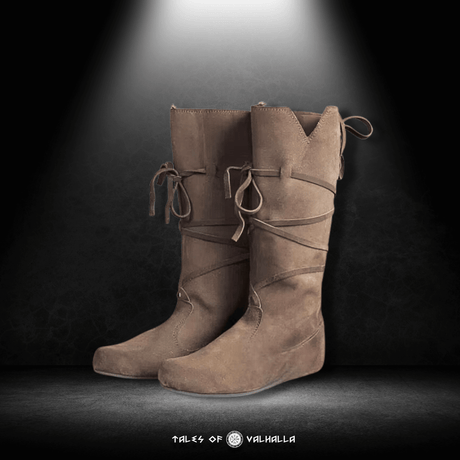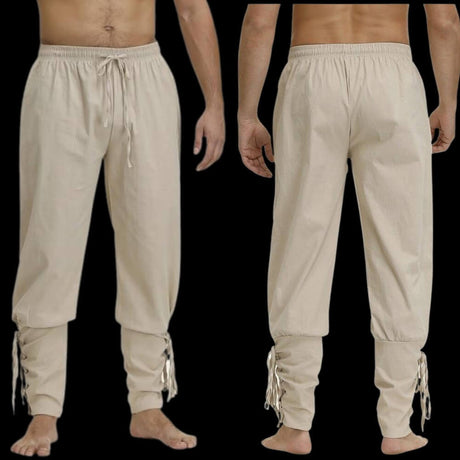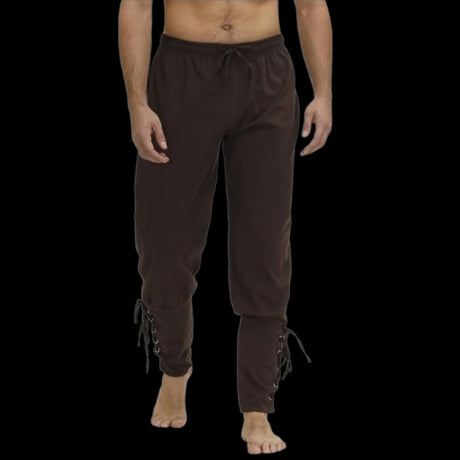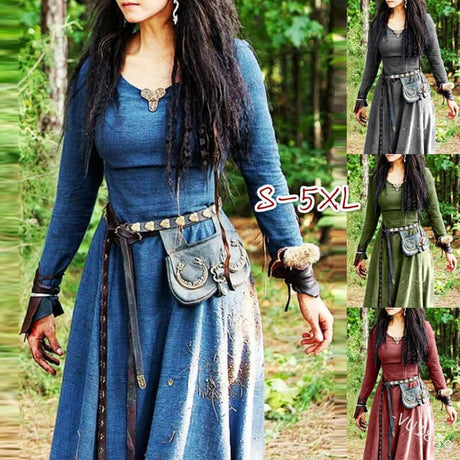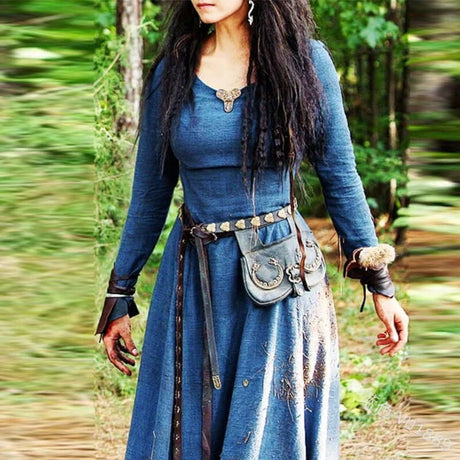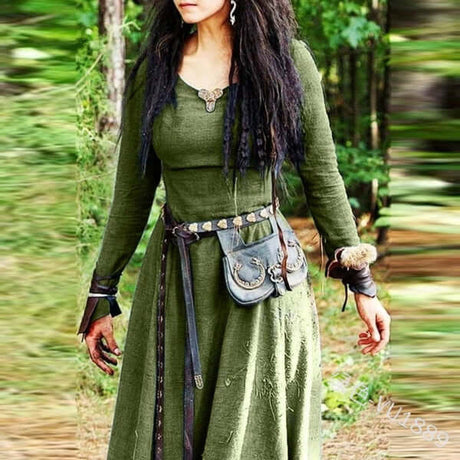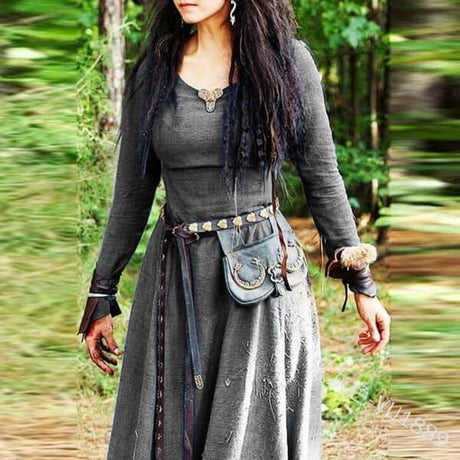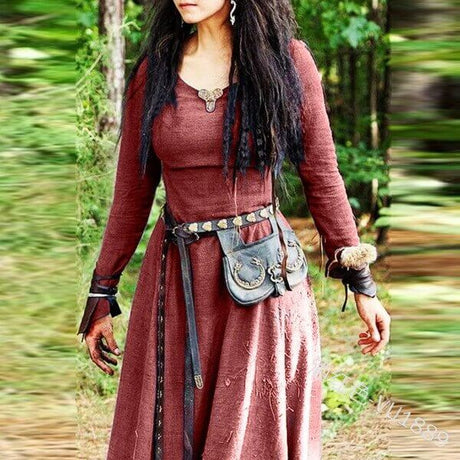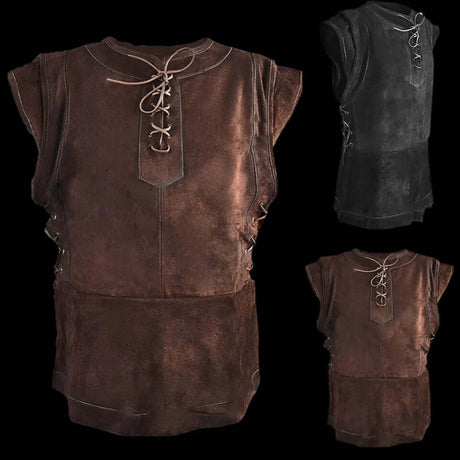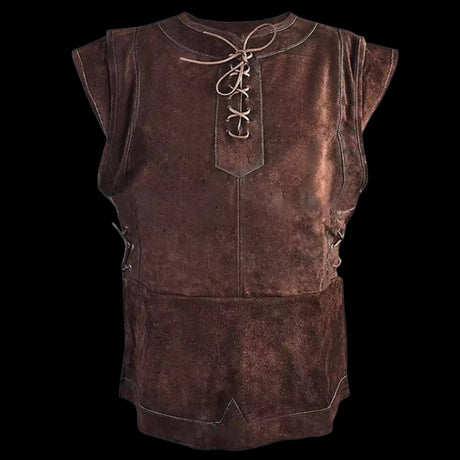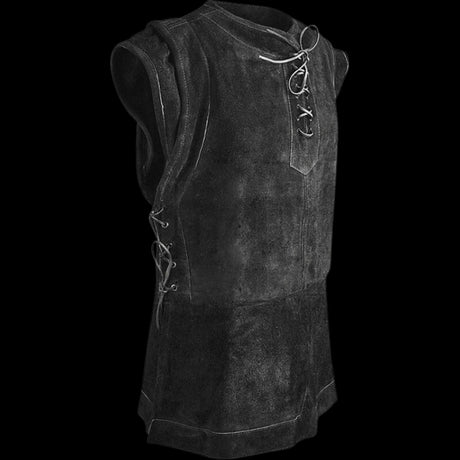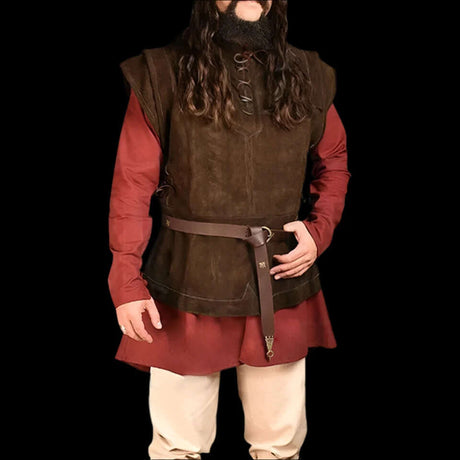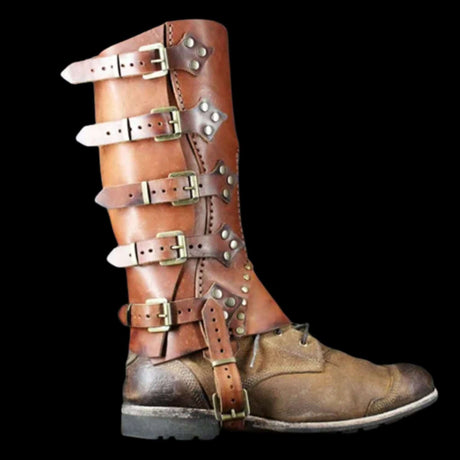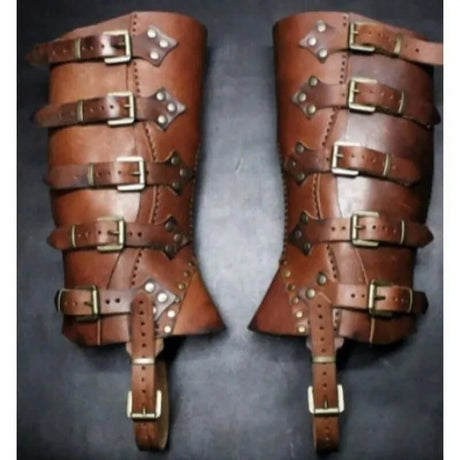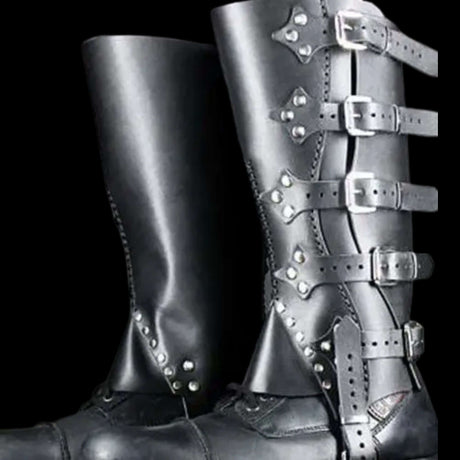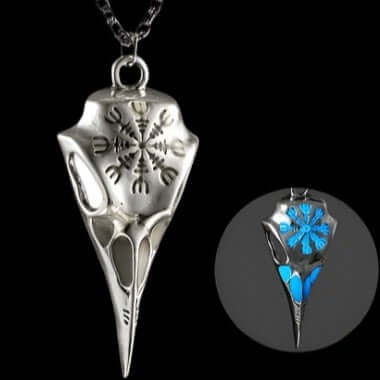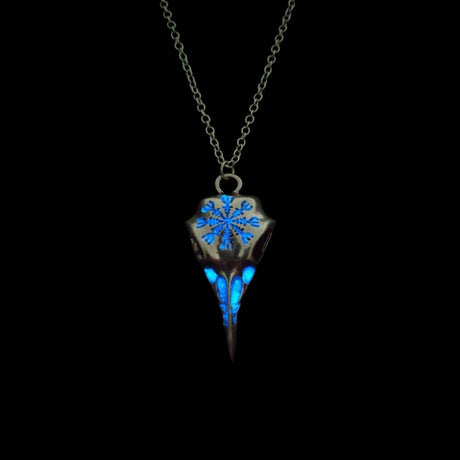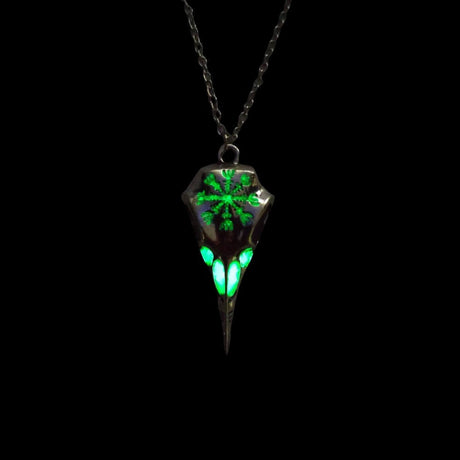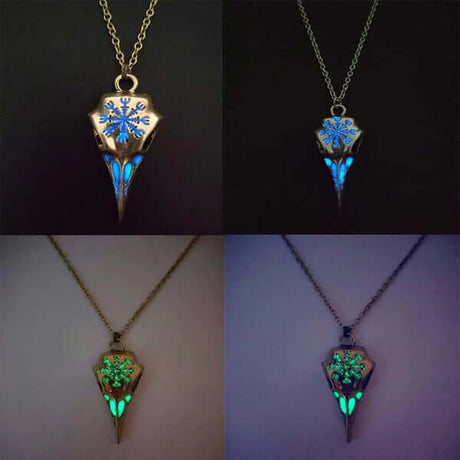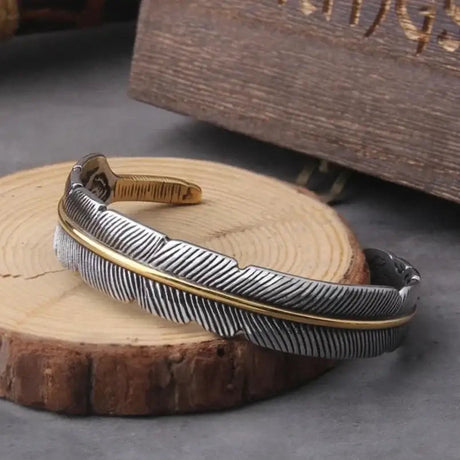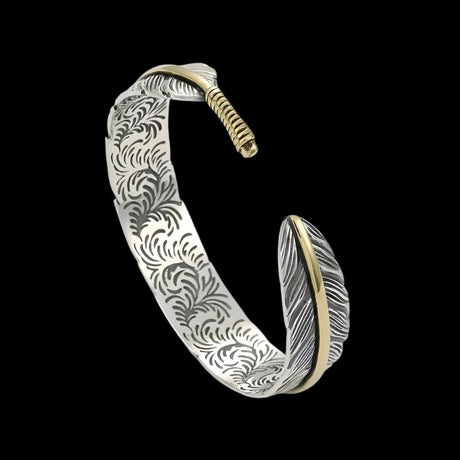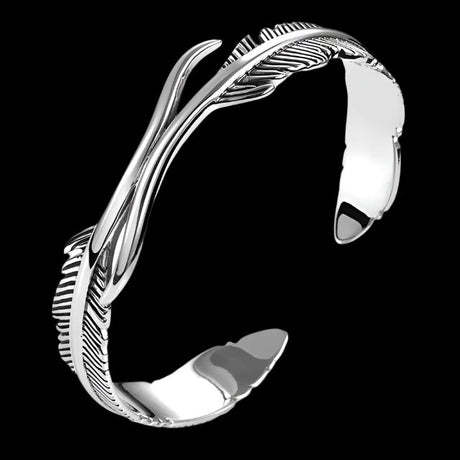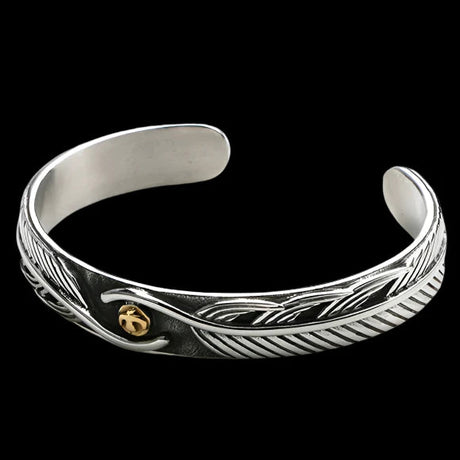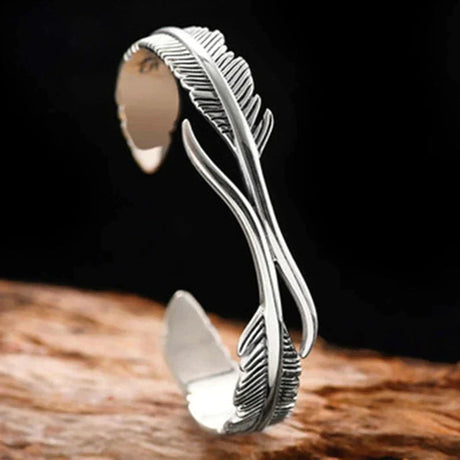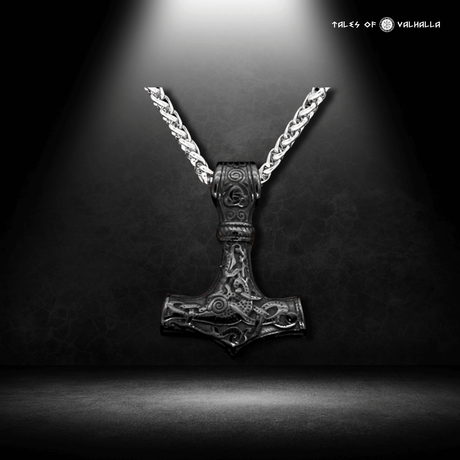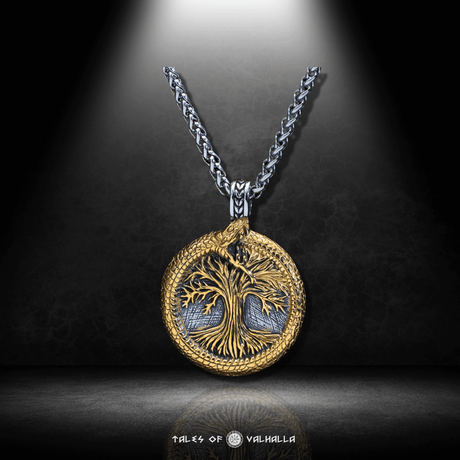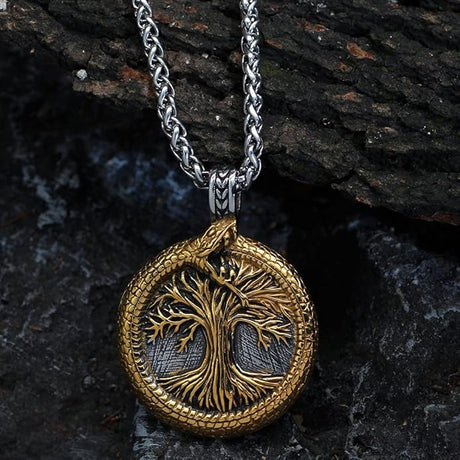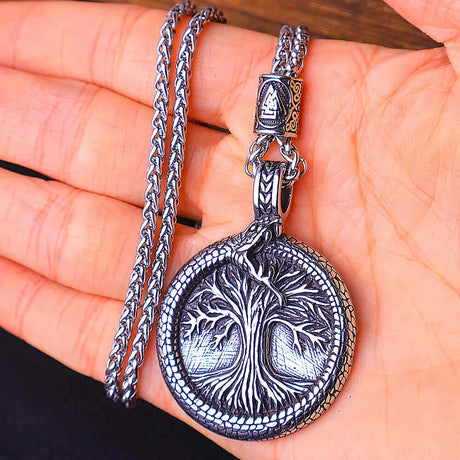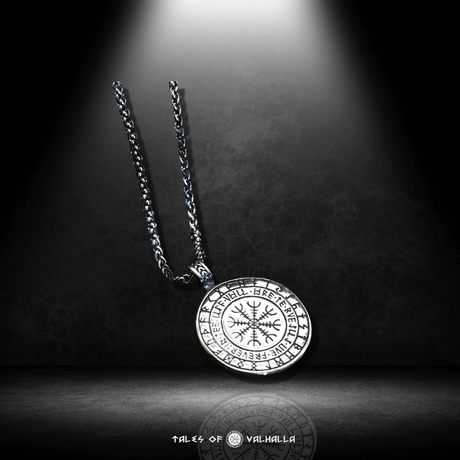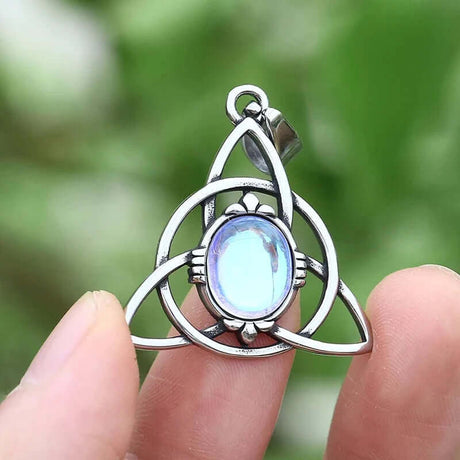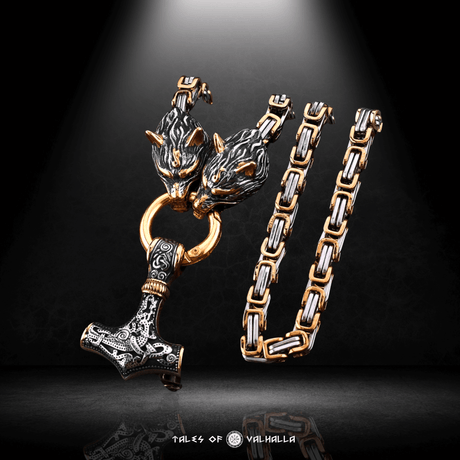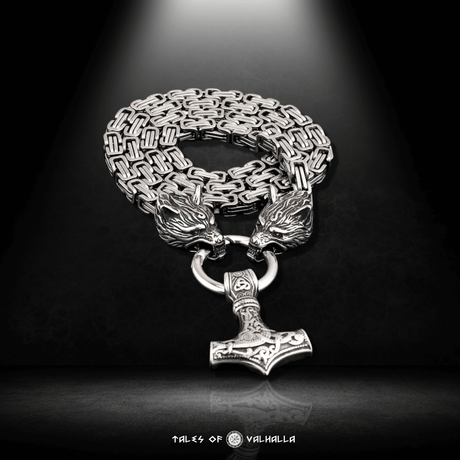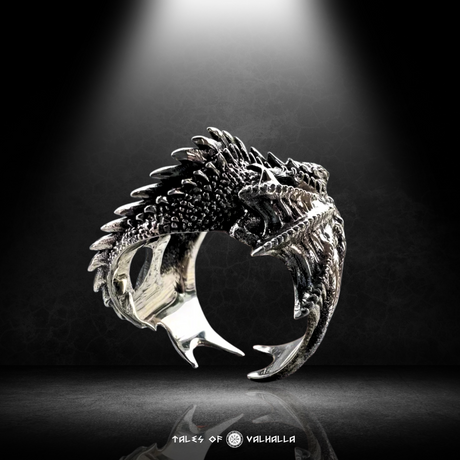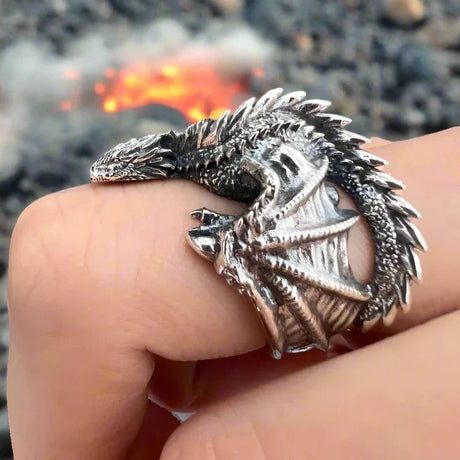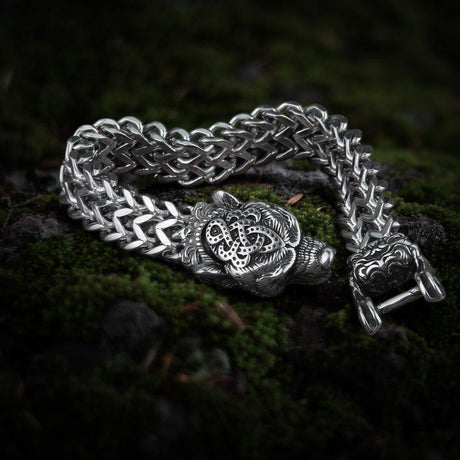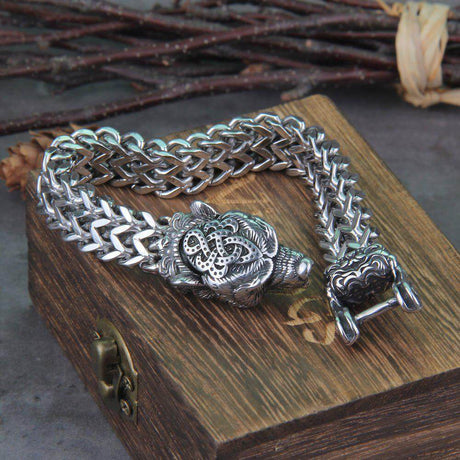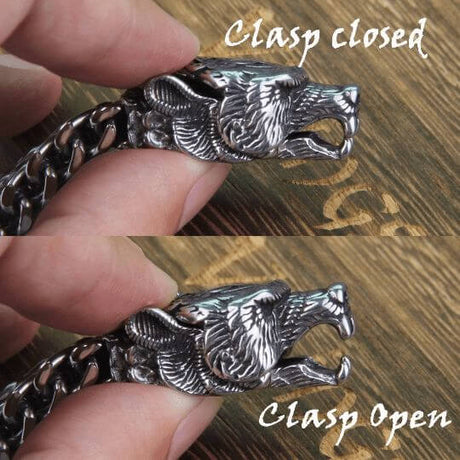Kratos hefts the Leviathan Axe, its surface glowing with an otherworldly blue light. Atreus draws his bow, nocking an arrow that crackles with runic energy. In the world of Santa Monica Studio's God of War, runes are a source of spectacular power – they are keys to ancient puzzles, fuel for devastating combat abilities, and the very language of magic. For millions of gamers in the United States and across the globe, this is their primary vision of Norse runes. But how does this explosive, high-fantasy portrayal compare to the historical reality? What was the true purpose of the rune in the Viking Age?
The journey from the glowing symbols on Kratos’s axe to the chiseled marks on a thousand-year-old stone is a fascinating one. This deep dive will explore the world of runes through two lenses: their breathtaking role in the God of War saga and their actual, historical function in the Viking reality. We will separate the saga written in blood and ink from the one written in code and pixels, understanding how one inspires the other. Appreciating the power of the rune means understanding both its mythic potential and its historical truth.
The Runes of Midgard: How God of War Wields Runic Power
The developers of God of War (2018) and God of War Ragnarök masterfully integrated runes into every facet of their game, making them far more than just a decorative element. They are an active, tangible source of power.

The Runes of Midgard: How God of War Wields Runic Power
Runes as Combat Magic: Unleashing Elemental Fury
The most spectacular use of runes in the game is through Runic Attacks. These are special abilities that can be equipped to weapons like the Leviathan Axe and the Blades of Chaos, allowing Kratos to unleash powerful magical assaults.
- Light and Heavy Attacks: Each weapon has slots for a light and a heavy runic attack. These abilities range from sending out a wave of ice, creating a fiery whirlwind, to summoning spectral wolves. The power of the rune in this context is direct, elemental, and devastating.
- Visual Spectacle: When activated, the runes on Kratos's weapons glow brightly, signaling the release of immense energy. This visual feedback makes the player feel the power they are unleashing, creating a deeply satisfying combat experience. The rune becomes a trigger for on-screen magic.
- Elemental Properties: The game cleverly links different runes to different elements – frost, fire, poison, etc. This system adds a layer of strategy, as players choose abilities based on the enemy they are facing.
Runes as Puzzles and Keys: Unlocking the World
Beyond combat, runes are central to exploration and puzzle-solving in God of War.
- Nornir Chests: These treasure chests are sealed by magical runes. To open them, the player must find and strike three corresponding runic symbols hidden in the nearby environment, often within a time limit. Here, the rune is a lock, and the player's weapon is the key.
- Environmental Puzzles: Runes are frequently used to activate mechanisms, clear pathways, or reveal hidden secrets. Atreus, with his linguistic ability, can read runic inscriptions to understand puzzles and translate lore, making the comprehension of the rune a core gameplay mechanic.
- World Traversal: The magical chisel used to open pathways is, in itself, a tool for interacting with powerful, oversized runes carved into the landscape, further cementing their role as a key to the world.
Runes as Narrative and Lore: Building a Rich World
The game world is saturated with runic writing, which serves to build a deep sense of history and immersion.
- Jotnar Shrines: These large, beautifully illustrated shrines tell the stories of the giants and their prophecies, all captioned with runic text.
- Atreus's Journal: As Atreus learns, he documents his journey, writing about creatures, characters, and lore in his journal using runes. This clever device allows the player to learn about the world alongside the character. The act of deciphering the rune is a journey for both player and protagonist.
- Environmental Storytelling: Runic graffiti, warning stones, and memorial markers are scattered throughout the nine realms, each telling a small story and making the world feel ancient and lived-in.
God of War's use of runes is a masterclass in game design. It takes an ancient alphabet and transforms it into a dynamic, interactive system that is integral to combat, exploration, and storytelling. But how does this spectacular vision of the rune compare to the historical reality?
The Viking Reality: The True Purpose of Runes
To understand the real runes of the Viking Age, we must step away from the world of elemental magic and enter the world of language, memorials, and a more subtle, debated form of magic. The story of the rune in history is less explosive, but no less fascinating.
An Alphabet First and Foremost: A Tool for Communication
The primary and undisputed function of runes was as an alphabet. "Rune" itself means "secret" or "mystery," but at its core, it was a system for writing the Germanic languages spoken across Northern Europe.
- Designed for Carving: The angular, straight-lined appearance of runes is no accident. They were designed to be easily carved into hard surfaces like wood, stone, bone, and metal. Curved lines are difficult to carve into wood grain without causing splits, which is why runes are composed almost entirely of vertical and diagonal strokes.
- Ownership and Labels: Archaeologists have found countless everyday objects marked with runes. A comb might have "Hakon owns this comb" carved on it. A weapon might bear its owner's name. This was a practical use of the rune for identification.
- Memorials and Runestones: The most famous use of runes is on runestones. These were large stones, often elaborately decorated, erected to commemorate the dead, celebrate a great achievement, mark a land claim, or detail a journey. The inscription on the rune-stone was a permanent record, meant to be seen and read for generations.
Story Vignette 1: The Carver's Memory Sten, a grizzled Viking with hands hardened by stone and steel, knelt before a massive granite slab. His chieftain, Halfdan, had fallen in a raid in England, and his sons had commissioned this stone to honor his memory. With a sharp iron chisel and a heavy mallet, Sten began to carve. He wasn't casting a spell; he was fighting against the ultimate enemy: being forgotten. Each chiseled line formed a letter, a memory. "H-A-L-F-D-A-N... R-A-I-S-E-D... T-H-I-S... S-T-O-N-E..." The power of the rune here was not to summon lightning, but to make a man's name and deeds echo through eternity. It was a magic of remembrance, a saga written not in ink, but in stone.
The Elder vs. Younger Futhark: A Crucial Distinction
A key difference between the game and reality lies in which runic alphabet is used.
- Elder Futhark (c. 150-800 AD): This is the oldest form of the runic alphabet, consisting of 24 characters. It was used during the pre-Viking Germanic Iron Age and the very beginning of the Viking Age. Because of its antiquity and mystery, this is the alphabet almost exclusively used in God of War and most modern esoteric systems. The very look of the rune from this set feels more arcane.
- Younger Futhark (c. 800-1100 AD): During the Viking Age proper, the runic alphabet was simplified into the Younger Futhark, which had only 16 characters. This was the alphabet that the historical Vikings—the raiders, explorers, and traders we think of—actually used for their runestones and daily writing. The fact that they reduced the number of runes shows they were primarily focused on its efficiency as a practical writing system.
This is a critical point: the beautiful, complex runes seen in God of War are from an older system that was largely obsolete during the main period of Viking activity.
The Thorny Question of Viking Magic and "The Rune"
So, if runes were primarily an alphabet, was there any magic to them? The answer is a heavily debated "yes, but not like in the game." The belief in the magical potential of the rune was real, but its application was far more subtle.

The Thorny Question of Viking Magic and "The Rune"
Was There "Runic Magic"?
Historical and literary sources suggest that Vikings did believe runes held inherent magical power. The Hávamál, a poem from the Poetic Edda, describes Odin's ordeal to gain knowledge of the runes, explicitly linking them to magic, charms, and powerful knowledge.
Galdr and Divination: The True Runic "Spells"
Viking runic magic likely involved two main practices:
- Galdr (Incantations): This was the practice of chanting or singing runes or runic formulas to achieve a magical effect. The power was in the sound, the intention, and the symbolic meaning of the runes being invoked. A "spell" wasn't a fireball; it was a carefully recited verse meant to heal, protect, or curse. The rune was a component of a larger ritual.
- Divination: While not explicitly detailed, it's widely believed that runes were used for divination, similar to casting lots. Runic symbols might be carved on wood chips or stones, placed in a bag, and drawn to seek guidance or understand the forces of fate. The interpretation of the rune drawn would provide insight.
Charms and Talismans: The Power of the Carved Rune
Runes were often carved onto objects to imbue them with a specific quality.
- Protection: The Algiz (ᛉ) rune, for example, was a powerful symbol of protection. Carving it on an amulet, a shield, or a house beam was a magical act intended to ward off harm.
- Victory: The Tiwaz (ᛏ) rune, named for the god Tyr, was often carved on weapons to ensure victory in battle.
- Bindrunes: A bindrune is a symbol created by combining two or more runes. This was a form of advanced runic magic, creating a single, potent sigil for a specific purpose, like "good luck" or "safe travels." The power of a single rune could be amplified or specified through this combination.
Head-to-Head: A Comparison of Game Runes and Historical Runes
To clarify the differences, let's compare how the rune functions in these two worlds.
Why the Difference? The Needs of Storytelling vs. History
It's not that God of War "got it wrong." The developers made deliberate, brilliant choices to adapt historical elements for the needs of a modern, interactive video game.
Gameplay Demands: Action and Engagement
- Visual Feedback: Games need to be visually exciting. A glowing, explosive runic attack is far more engaging for a player than a slow, subtle ritual chant.
- Interactive Mechanics: Runic puzzles provide a satisfying challenge and reward for players, making them active participants in unlocking the world's secrets.
- Player Progression: The system of finding and upgrading runic attacks gives players a clear sense of progression and customization.
Historical Practicality: Communication and Belief
- Real-World Needs: The Vikings needed a practical way to write. Their runes were perfectly suited for carving into the materials they had available. The power of the rune was in its ability to communicate across time.
- Belief Systems: Their magical practices were rooted in their worldview – a belief in fate, the power of words, and the influence of unseen forces. Their rituals were designed to interact with these beliefs, not to create video game-style special effects.
The Success of God of War's Approach: A Gateway to History
The artistic license taken by God of War has had an overwhelmingly positive effect: it has sparked immense interest in authentic Norse mythology, culture, and the true history of runes.
- Sparking Curiosity: Millions of players, captivated by the game's world, have been inspired to ask, "What is the real story behind the rune?" This has led to a surge in interest in Viking history in the United States and worldwide.
- Appreciation for the Real Thing: Learning about the historical runes doesn't diminish the enjoyment of the game; it enhances it. It allows players to appreciate the clever ways the developers adapted the source material.
Story Vignette 2: The Gamer's Discovery After finishing an intense session of God of War Ragnarök, a young American player named Alex found himself thinking about the Nornir chests. He’d spent hours solving their runic puzzles. A quick online search for "God of War runes" led him down a rabbit hole. He was stunned to discover that runes were a real, historical alphabet. He learned about the Elder and Younger Futharks, about runestones in distant Scandinavia, about the subtle magic of charms and incantations. The glowing symbols on his screen suddenly took on a new, deeper meaning. The game wasn't just fantasy; it was a doorway. The power of the rune, he realized, was not just in its ability to create a frost wave, but in its ability to connect him to a thousand-year-old history he never knew existed.
Conclusion
So, what is the truth of the rune? It is both the spectacular magic of God of War and the practical, ritualistic alphabet of the Vikings. One is a brilliant adaptation for entertainment, a masterclass in game design that honors the spirit of the myths. The other is a powerful, real-world tool of history, communication, and belief. The power of the rune is undeniable, whether it's unleashing a torrent of ice on your screen or preserving a name in stone for a thousand years.
It’s not necessary to choose between the two. One can fully enjoy the explosive fantasy of the game while also appreciating the deep and subtle reality of historical Viking Magic. In fact, the spectacular fiction of God of War has become a powerful gateway for millions, sparking a genuine curiosity to explore the authentic world of the Norse people. When you are ready to continue that journey, to delve deeper into the sagas, symbols, and enduring culture of the Viking Age, resources like tales of valhalla offer a gateway into that legendary world.
6 FAQs
1. Q: How are the runes in God of War different from real Viking runes?
A: In God of War, runes are spectacular combat magic and interactive puzzle keys. In Viking reality, runes were primarily a practical alphabet for writing, used for memorials, messages, and marking ownership. The power of the rune in history was believed to be more subtle and ritualistic, not for creating elemental attacks.
2. Q: Did Vikings really use runes for magic like Kratos does?
A: No. Vikings did not use runes to summon frost waves or fiery explosions. Historical "runic magic" was more subtle and likely involved galdr (magical chants or songs using runes), divination (casting runes to interpret fate), and carving the rune onto objects as protective charms or talismans.
3. Q: If runes weren't for combat, what was their main purpose for Vikings?
A: The primary function of runes was as a writing system. They were an alphabet designed with straight lines, making them easy to carve into hard surfaces like stone, wood, bone, and metal. Their most famous use is on large runestones, which served as memorials to honor the dead and record their achievements.
4. Q: Are the runes shown in God of War the same ones the Vikings actually used?
A: Mostly no. God of War predominantly uses the Elder Futhark, an older 24-character alphabet, for its ancient and mystical aesthetic. However, during the main Viking Age (c. 800-1100 AD), the Norse people actually used the simpler, 16-character Younger Futhark for their writing and carvings.
5. Q: What about the runic puzzles in the game, like the Nornir chests? Is that based on anything real?
A: The Nornir chests and other environmental puzzles are a creative and engaging gameplay mechanic. While Vikings believed the rune held power and used them in enigmatic ways, there is no historical evidence of them creating complex, timed puzzles that required striking symbols to unlock magical seals.
6. Q: Why did the game change how runes work so much from historical reality?
A: The changes were made to create exciting and interactive gameplay. Spectacular, visual runic attacks are far more engaging for a modern video game than the slow, ritualistic nature of authentic runic magic. The game developers brilliantly adapted historical symbols into fun mechanics that honor the spirit of the mythology while being entertaining.

